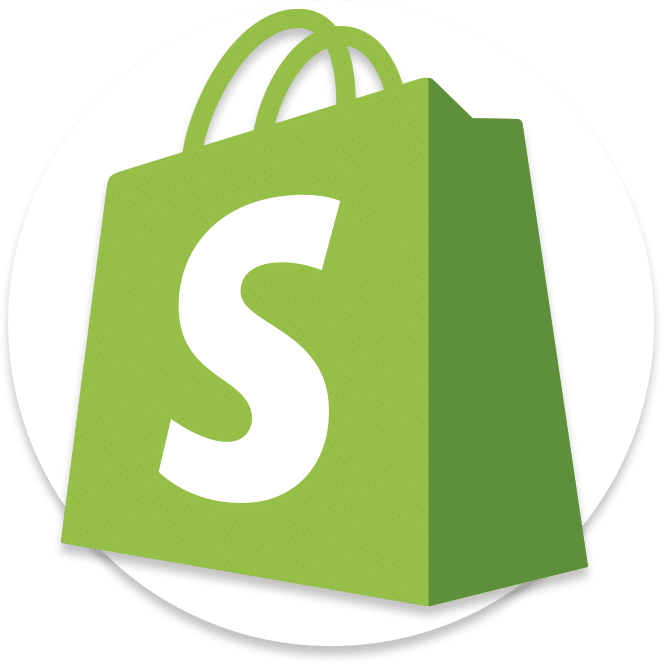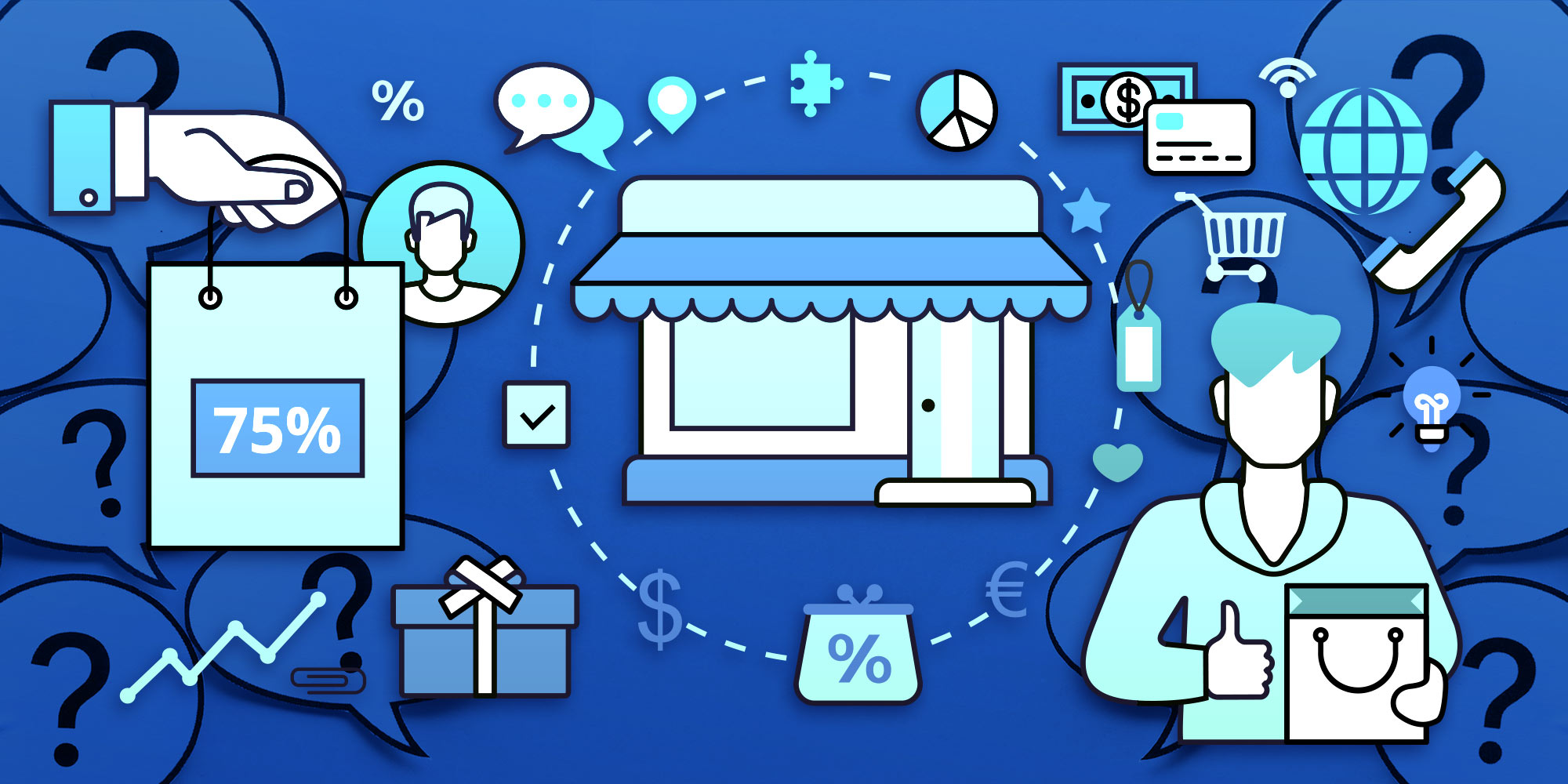KEY TAKEAWAYS:
Recent stats confirm that eCommerce is a trend that’s here to stay, as more consumers turn to it as their preferred shopping mode.
Brush up on eCommerce lingo to bolster your industry authority as an e-store owner.
As 2023 continues to play out, the eCommerce trend only continues to grow. Per Statista, the US e-commerce market’s revenue is predicted to reach 1.4 trillion U.S. dollars by 2027. And it’s estimated that US e-commerce users will reach 289.91 million buyers by this same year.
Whether you’re in the process of setting up your first Shopify store or you’ve had a thriving one for years, a refresher on eCommerce terms is a simple way to sharpen your knowledge and enhance your success. Here are 23 glossary terms to give you an edge in the eCommerce field.
The US e-commerce market’s revenue is predicted to reach 1.4 trillion U.S. dollars by 2027. And it’s estimated that US e-commerce users will reach 289.91 million buyers by this same year.
Statista
Average Order Value (AOV)
Sometimes referred to as AOV, average order value is a metric for the average amount that customers spend on a transaction at a certain retailer. You calculate it by dividing the total revenue during a certain time frame by the number of orders during this time frame. It’s important to note that AOV is based on total sales, not individual products.
Call-to-Action (CTA)
As the name implies, a call-to-action is a text link or image that encourages a consumer to take a specific action. A CTA could prompt customers to make a purchase, fill out a form, or visit another page on the store’s website.
Cart Abandonment Rate
This term refers to the number of customers who put an item in their virtual shopping cart but then “leave” the cart without completing the purchase. To determine a cart abandonment rate, divide the number of people who put items in a cart and left by the total number of people who placed items in their cart.
Checkout Process
In eCommerce lingo, the checkout process is the customer’s journey from when they click “buy now” till they complete the purchase and receive an order confirmation email. The simpler the checkout process, the higher the odds that a customer will finish buying the product they selected instead of abandoning their virtual shopping cart.
Conversion Funnel
This phrase is a visual that illustrates the start of your customer’s journey from awareness of your brand and products to making a purchase. The goal of eCommerce leaders is to make this process as smooth and convenient as they can, so customers keep doing business with their brand.
Conversion Rate
A conversion rate has to do with how many people took the action you wanted them to versus the number of people you prompted to take that action. When eCommerce leaders refer to conversion rates, they could be using it to talk about sales or marketing goals such as getting customers to subscribe to their store’s newsletter.
Customer Journey
This term refers to the path a customer takes when visiting your website and the sequence of interactions they take on your site, whether they purchase something, gather more information about your brand, or both. Each person has a different customer journey. The goal for an eCommerce leader is to ensure an easy and smooth experience for every person, regardless of what pages they visit and the actions they take on your site.
Customer Retention
As you might have guessed, this phrase is another way to describe the practice of cultivating and keeping repeat customers.
Dropshipping
This term refers to an eCommerce store’s practice of using a third party to store and ship its products to customers. It’s a great option for small business owners who want lower startup costs as well as a wide product selection. Another advantage of this practice is that it lets eStore owners scale up or down quickly in response to customer demand.
Faceted Navigation
A phrase that indicates how an eCommerce website lets customers filter and sort results based on set criteria. The end goal of faceted navigation is that users can quickly and easily find the product they want to buy.
Interactive Product Visualization
Sometimes called “3D product rendering,” this term has to do with using AR technology and imagery to let users interact with a product. It’s an effective tool to help users understand a product. For custom products, it gives consumers a way to create and see a rendering of the product before committing to purchasing it.
Mega Menus
A mega menu simplifies the user experience by condensing a website’s full navigation into one large menu. Customers can find the products and pages they’re looking for at-a-glance instead of sifting through multiple drop-down menus.
Online Value Proposition (OVP)
OVP is what persuades someone to shop and buy from a certain eCommerce website rather than a competitor. This can take the form of emphasizing free shipping or free resources you provide clients that a rival eStore might not be offering.
On-Site Navigation
This term is defined as the steps a customer takes to find a product on an eCommerce website. It’s important to audit your website from time to time, from a customer’s perspective, to ensure that it’s fast and painless to find a certain product and complete the checkout process.
Payment Gateway
Sometimes referred to as “payment processor,” a payment gateway is a technology that processes credit card payments for eCommerce stores. Stripe and PayPal are two examples of payment gateways.
PCI Compliance
Every eStore must be PCI compliant. If you’re not familiar with PCI compliance, it’s simply a set of industry regulations that credit card companies require to ensure that payments are secure, and that customers’ personal information is protected.
PIM System
A PIM, or product information management tool, is a tool that eCommerce businesses use to manage product data in a centralized location. It’s typically a resource that suppliers, eStore staff, and customers all have access to.
Product Attributes
This phrase refers to the tangible and intangible properties of a certain product that you’re selling online. Product attributes — such as color, size, weight, ingredients/materials, and style—allow a customer to compare two products from your store.
Product Description
Copy that explains the product’s design and uses is known as the product description. Optimizing this copy for SEO is an easy way to help increase traffic to your site. For instance, make sure that product descriptions include keywords that customers commonly Google when shopping for a certain product.
Product Details Page
This term indicates the “specs” part of a product listing. It shares details about and an image of the product as well as product reviews and similar product suggestions. This page can also include a CTA like “buy now” or “add to wish list.”
Product Listing Page
As the phrase suggests, this page is a roundup of multiple products an eStore offers that correspond to the keyword phrase the customer entered in the search bar. For instance, when a customer is searching for “women’s pants” or “men’s shirts,” the products that come up in response to that search are the product listing page.
Shopping Cart/Bag
On an eCommerce website, a virtual shopping cart or bag collects items that customers want to buy until they’re ready to checkout. Even if a customer doesn’t make a purchase right away, they can come back to this cart later to complete their order and submit payment.
Wish Lists
These lists are for customers who are browsing and intend to buy an eStore’s products sometime soon. It’s a place to store items to reference later when they’re ready to buy or want to share their list with a friend or relative to buy for them as a gift.
75% of shoppers intend to do their Christmas shopping online [this year].
Statista

Elevate Your eCommerce Expertise with Shopify
Ready to start or transition to an eCommerce store seamlessly, in time for the 2023 holiday season’s predicted online shopping surge? Or convert your current store to Shopify’s platform? You’ll have you a new site up and running without a hitch when you attend Technology Therapy® Group’s 8-week virtual training course on Shopify.
Seats are limited to 10, so claim your spot today!




